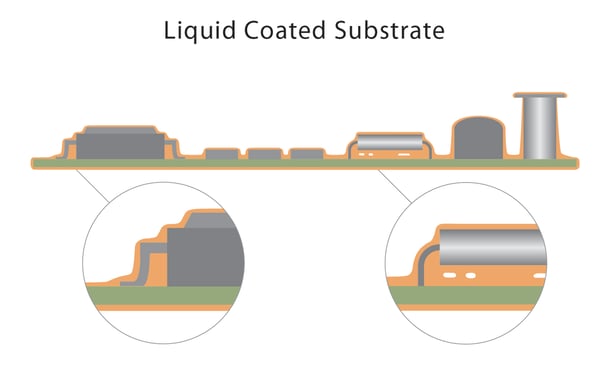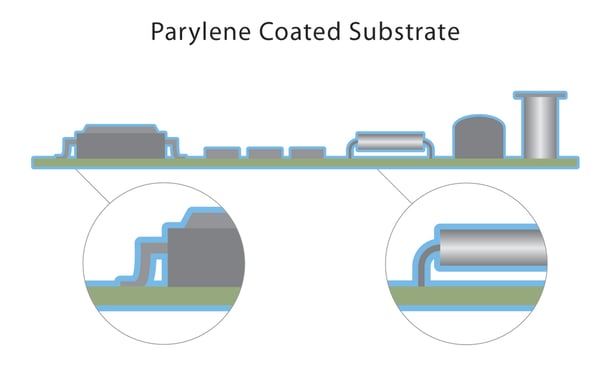
Conformal coatings are used in the manufacturing process of countless different components and subassemblies that require electrical, biological, or environmental protection to ensure the functionality, durability, and safety of the product.
Manufacturers have two options when it comes to industrial conformal coatings – Liquid and Parylene. The choice will be dependent on desired coating thickness, meeting specific industry standards, the areas on the substrate that must not be coated, and other factors determined by the application.
Brushing is generally used for small jobs or repairs. Tends to be slow to apply and without options to manage coating thickness. The quality relies on the precision and skill of the operator.
Spraying can be used for larger surfaces and applied carefully to manage thicknesses for a strong, reliable coating. However, substrate cleanliness is crucial for success.
Dipping is a fast and common method in which the substrate material is dipped in the coating. Can be used for high-volume jobs where an entire product requires coating and the coating integrity is less critical.

Parylene is a common generic name for a unique series of polymers based on para-xylylene. It is formed by the pyrolysis of a di-p-xylene (dimer) in a controlled vacuum environment which is then deposited on a cooler (i.e. room temperature) substrate while under continuous vacuum. The vapor phase deposition of the Parylene polymer allows for a completely homogeneous coating formed as a structurally continuous film which is truly conformal to the design and structure of the substrate upon which it is being deposited.
Parylene thickness is a function of the amount of vaporized dimer and chamber dwell time and can be controlled accurately to within +/- 5% of the targeted thickness for most typical applications. It can be effectively deposited with excellent accuracy in thickness over a range from 0.2 µm (microns) to well over 8 mils.

Parylene is the obvious choice for many coating applications. Contact Advanced Coating to learn more about its many uses and benefits.

Advanced Coating
10723 Edison Court
Rancho Cucamonga, CA 91730
Phone: 800.722.1444 | Fax: 909.481.1427
©2021 Advanced Deposition & Coating Technologies, Inc.
Terms of Use • Privacy Policy